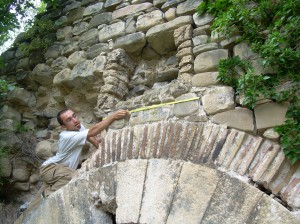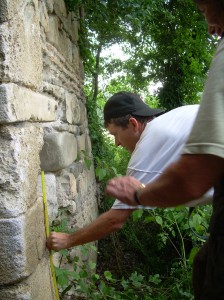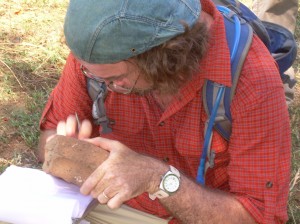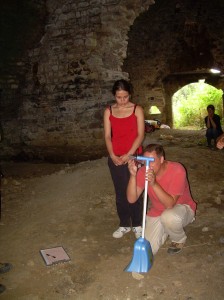On Tuesday we found a stone wall and a daub mound at Yakadibi. Part of our work at the wall involved mapping out the full wall. To do so required us climbing along the hillside through trees and other foliage so that we could see the full extent of the wall. The coolest part for me was that to get back to the top of the hill and off of the hillside, we had to climb over the stone wall. How many people can say that they climbed over an ancient wall?
-Liz
Category Archives: Uncategorized
Fishing Weights Update
For those of you who read my earlier blog post, as promised I did some follow up research about stone fishing weights. I found out that they make up a large proportion of the ancient fishing equipment found at archaeological sites. The presence of stone weights (or other indicators of ancient fishing such as other fishing equipment, watchtowers, fish remains, etc) can be used to determine the type of fishing that occurred during ancient times. A large amount of evidence may indicate that fishing was a part of a major export. Less evidence present might indicate that fishing was merely a way to provide food for local consumption. The two stone weights that we found at Boztepe would probably have been used on a dragging net. Lighter clay weights were used for throwing nets. -Liz
See Jakob Munk Hojte’s article “The Archaeological Evidence for Fish Processing in the Black Sea Region” for more information.
Walk Through Ancient Sinop
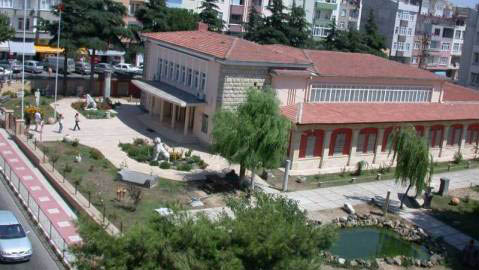
Last week in order to get the new students on the project, like myself, better acquainted with the archaeology of the area we all took a trip to the Sinop Archaeological Museum.
We were led by our fearless director Owen who gave us a tour of the museum. He first
told us the story of the patron goddess of the city, Sinope. According to mythology she
resisted the advances of the mighty and charming Zeus and his son Apollo. She is an
important figure in Sinop because she epitomizes the peoples strong will and their
independence. We next saw the history of Sinop through pottery. Displayed in the hall
was pottery from all different time periods starting from the bronze age up until the
Byzantine era. In this collection we saw the different types of artifacts that were used in
the area and what types of pottery we would be looking for once we started our field
survey. Some of my favorites were the small Hellenistic pots, because of how fine they
are and the geometric motifs they had depicted on them. We next saw a brilliant mosaic
floor which depicted personifications of the seven muses and the four seasons.
Depicted around the figures was a wave motif and fish emphasizing the importance that
the sea play in the lives of the people here. The next room was filled with sarcophagi.
They were all highly decorated and demonstrated the wealth some people that lived in
ancient Sinop possessed. One Sarcophagus I found particularly interesting had a boat
rendered in relief on one side. Not only was this very different from the other sarcophagi
in the room but it was also made for a man Arrianus, which is the male form of my name
which was very cool to see. We later saw a room filled with amphora. This once again
showed us some of the material we could possibly see in the field. He explained to us
that the toe of the amphora was very helpful in dating it. Also the different inclusions such as Black Sand temper was distinct to Sinop and that amphora found with that type of inclusion in the clay was found throughout the ancient world. This shows how important a port Sinop was and how much oil they produced and exported. This not only shows how important Sinop was for boats to dock not only today but in the ancient
times and that they were a major producer of olive oil and major role player in the
economy of the ancient world. This trip to the museum was an enlightening one and
helped us see the importance of the place we will be working in this season. -Arianna
Medrese
One Sunday, Melody, Brittany and I went to the Medrese. The Medrese is a courtyard that has become somewhat of a bazaar. In this bazaar is a little coffee stand, which brews Turkish coffee. The coffee is poured into a copper looking small pot and then placed in a really hot pit of sand. After the coffee is heated up it was served in ceramic cups that were decorated in silverware. Along with the coffee that was served on a silver platter, came a pistachio flavor Turkish delight, and a cup of water, all also decorated in silver. -Olga
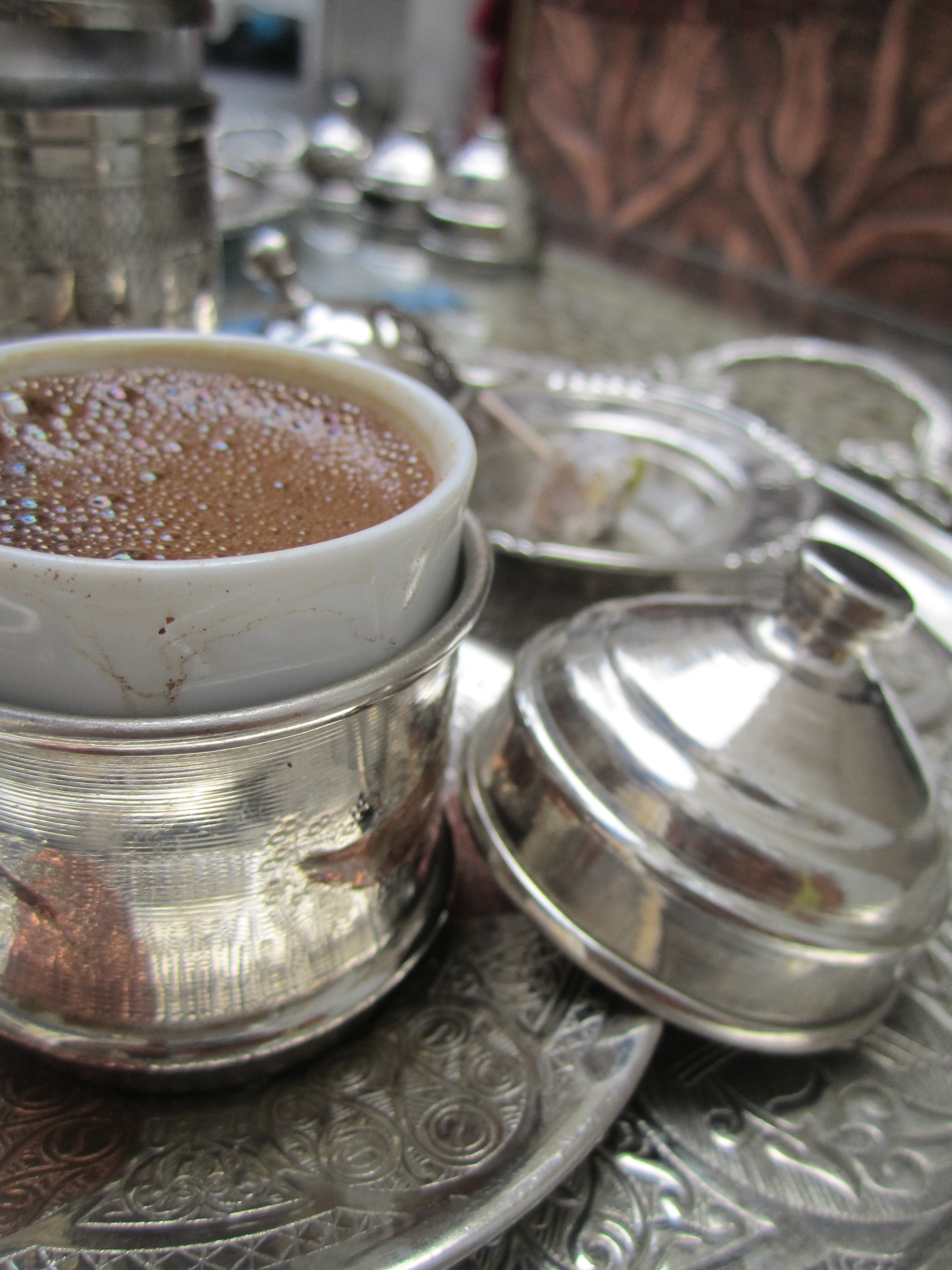
Fishing Weights in Boztepe
Here is a fishing weight that I found while field walking in Boztepe East. We were walking along a cliff edge near a tumulus when I found it. This cliff was high above the waters edge, so I would really like to know how the fishing weight ended up where it did. Check out the blog later this week when I update my post with more information about fishing weights.
– Liz
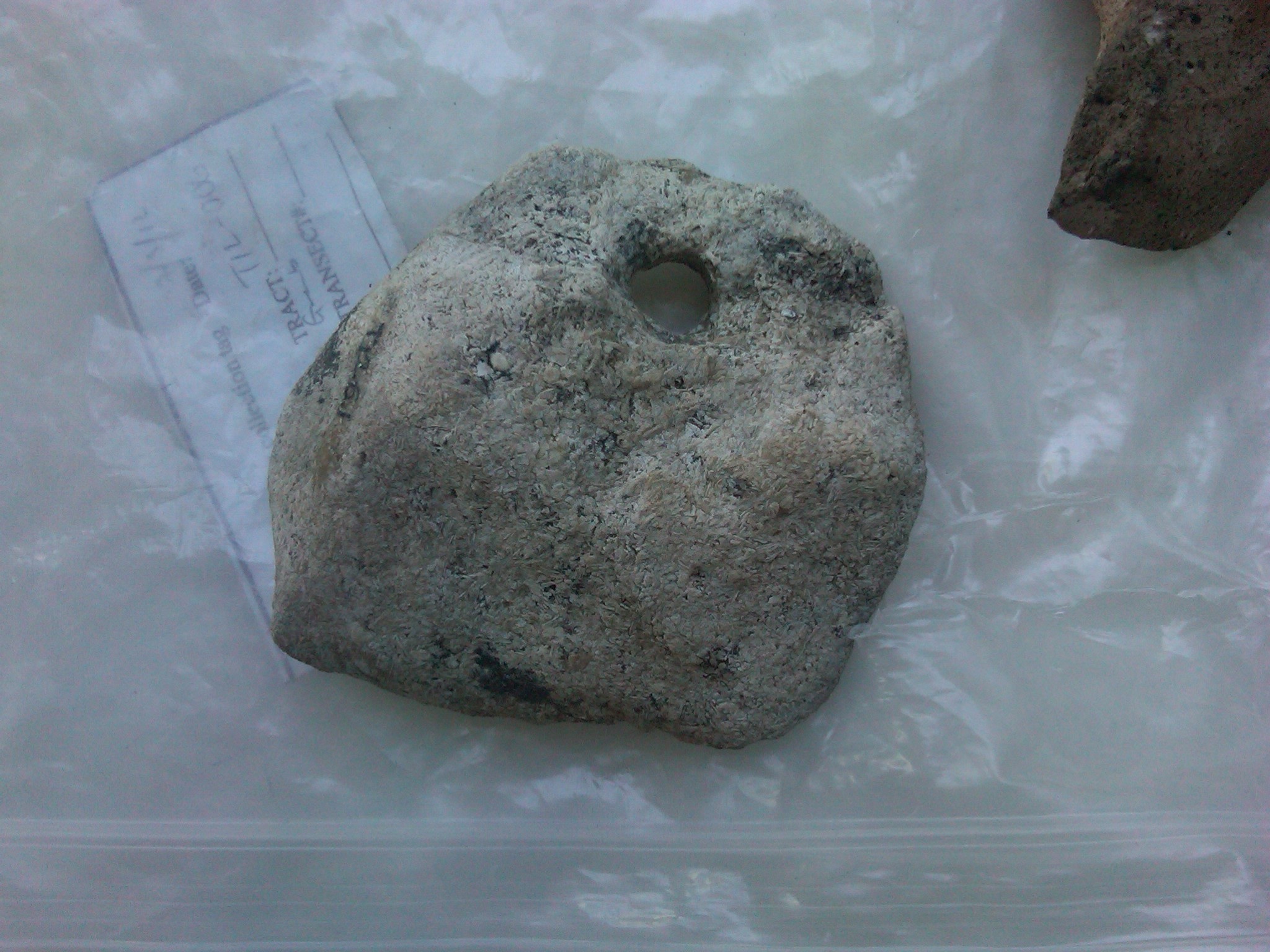
We found a Tumulus!!!!
On one of the first days out surveying we went on a wild goose chase with Owen. As me Olga and Owen ventured out to a field just past the dog pound at Boz Tepe we found large pieces of stone. One of the stones turned out to be a tomb! The tombs were dated to be from the Hellenistic Period. Unfortunately the set of tombs were looted. But we did end up going back and site surveying the next day and finding pieces which helped us figure out what time period the tombs may have been from. -Brittany
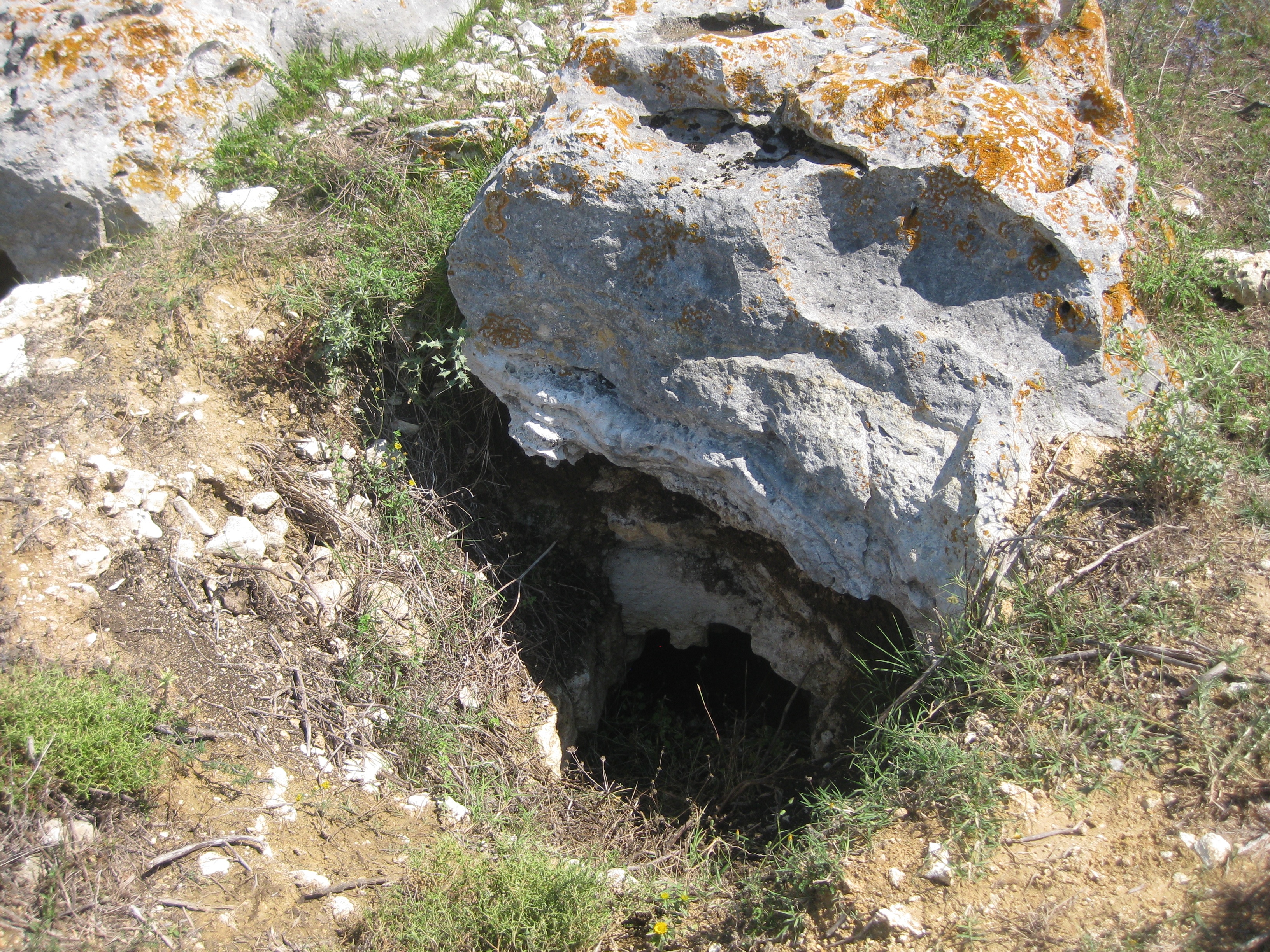
A Selection of Photos from the field
Fun on our day off
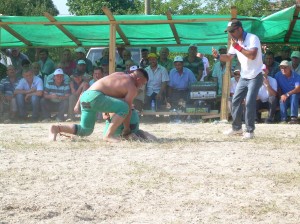 This past Sunday, on our day off, we went to a rather interesting festival in one of the nearby villages. In this part of Turkey, wrestling is the major sport, and the nearby village was hosting a big wrestling event for the first time in its history. It was extremely hot as we watched the event. The wrestles started off fairly young and each successive match, the contestants got older. The match just before the heaveyweight finals, was between two old men who were champion wrestlers in the early 70’s. Before the match started, the announcer made a special notification to the paramedics to be ready since the men were “really old”. this made all the spectators laugh. They never did finish the match as the village leader broke it up early and declared them both the winner (I imagine to avoid any possible medical problem of a prolonged match). It is rather exciting to be able to attend cultural events while working in the field
This past Sunday, on our day off, we went to a rather interesting festival in one of the nearby villages. In this part of Turkey, wrestling is the major sport, and the nearby village was hosting a big wrestling event for the first time in its history. It was extremely hot as we watched the event. The wrestles started off fairly young and each successive match, the contestants got older. The match just before the heaveyweight finals, was between two old men who were champion wrestlers in the early 70’s. Before the match started, the announcer made a special notification to the paramedics to be ready since the men were “really old”. this made all the spectators laugh. They never did finish the match as the village leader broke it up early and declared them both the winner (I imagine to avoid any possible medical problem of a prolonged match). It is rather exciting to be able to attend cultural events while working in the field

